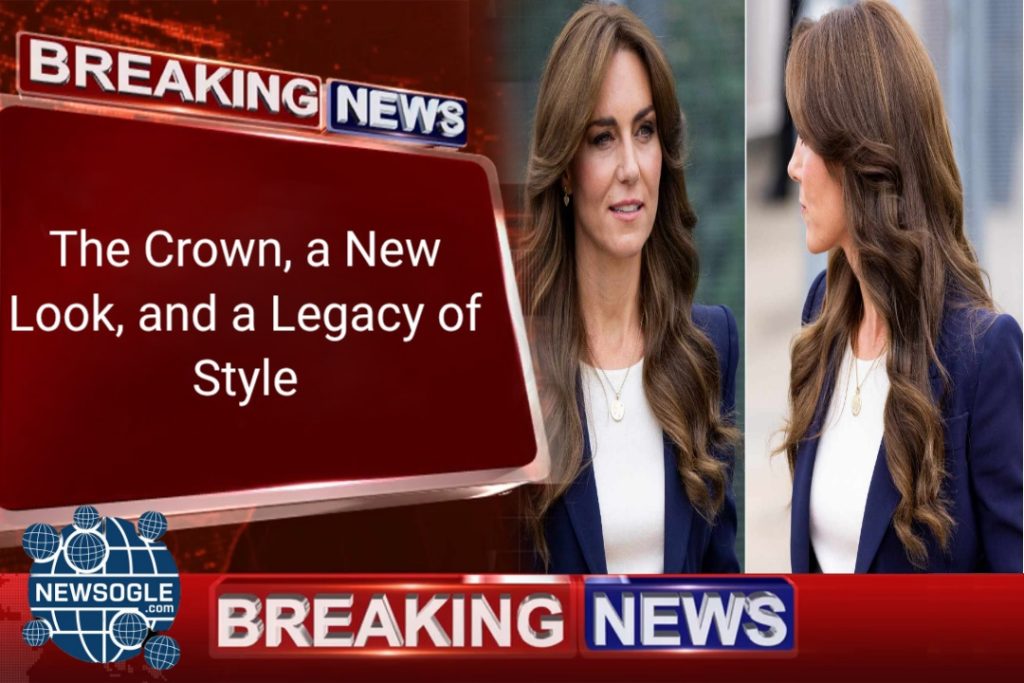
In the ever-evolving narrative of the British royal family, few figures command as much public attention as the Princess of Wales, Catherine. Her every move, from her charitable work to her fashion choices, is scrutinized and celebrated. But a recent and seemingly subtle change—a shift to a brighter, blonder hair color—has ignited a firestorm of discussion, not just about a simple style update, but about the very essence of her public persona. This new look, appearing at a time of significant transition for the monarchy, is being interpreted by royal observers and style commentators as a deliberate and powerful statement, signaling a new era for the woman poised to one day become Queen.
The change was first noted at a recent public engagement, where the Princess’s usually rich, brunette locks were replaced with a luminous, honey-blonde hue. The difference was striking, giving her a softer, more sun-kissed appearance. While many saw it as a simple, seasonal change, a closer look at the timing and context reveals a deeper significance. The monarchy is in a period of renewal, with King Charles III’s reign firmly underway and the younger generation of royals stepping into more prominent roles. As the Princess of Wales, Catherine’s role is not just to support her husband, Prince William, but to project an image of continuity, modernity, and strength for a new generation. Her hair color, in this light, is not merely cosmetic; it is symbolic.
The Royal Hair-itage: A History of Subtle Statements
To understand the weight of this transformation, it’s crucial to look at the history of royal style. From Queen Elizabeth II’s timeless, consistent coif to Princess Diana’s fashion-forward evolution, royal hair has always been more than just hair. It has been a tool for communicating identity, mood, and even political statements without a single word. Diana’s short, cropped hair in the 1990s, for example, was a powerful visual marker of her newfound independence. The late Queen, with her consistent hairstyle, symbolized stability and unwavering duty.
In this context, Kate’s shift to a blonder shade is a significant departure from her signature brunette. For years, her look has been one of polished, classic elegance. Her hair, often styled in soft waves or an intricate updo, has been a key part of this identity. The brunette color conveyed a sense of seriousness, tradition, and perhaps a touch of reserved formality. The blonde, by contrast, feels more relaxed, approachable, and even playful. It aligns her more closely with the sunny, optimistic mood that the monarchy is attempting to cultivate.
A Princess of the People, for a New Age
The blonde hair is being widely interpreted as a strategic move to soften her image and make her more relatable. The Princess of Wales is often lauded for her ability to connect with the public on a personal level, and this new look enhances that sense of approachability. It feels less like the hair of a ceremonial figure and more like that of a modern, working mother. This visual shift could be an effort to break down some of the remaining barriers between the public and the institution, presenting a face that is not just royal, but also human.
It’s a delicate balance to strike. The Princess must maintain the dignity of her position while also being accessible to a public that is increasingly skeptical of traditional institutions. Her fashion and beauty choices have long been a key part of this strategy. The “Kate Effect,” where anything she wears sells out instantly, is a testament to her influence. This latest hair change is poised to have a similar effect, inspiring a wave of salon appointments and color-matching requests. It’s a powerful form of soft diplomacy, a way of signaling change and progress without the need for formal announcements.
The ‘Disney Princess’ Parallel
Perhaps the most fascinating aspect of this discussion is the comparison being made to a “Disney princess.” The term, which might seem a bit whimsical for a future Queen, is actually quite insightful. The Disney princess archetype, at its best, represents grace, resilience, and a certain magical quality that transcends reality. With her new blonde hair, glowing smile, and polished demeanor, Kate is drawing comparisons to some of the most beloved animated heroines.
This parallel, whether intended or not, taps into a deeply ingrained cultural fantasy. It makes the Princess of Wales not just a figure of state, but a character in a modern fairy tale. It’s a powerful narrative tool, making her story feel more a part of the cultural zeitgeist. This “fairy tale” quality can be a double-edged sword, however. It can inspire and captivate, but it can also set up unrealistic expectations and a level of scrutiny that can be difficult to manage.
The Future of Royal Style
As Kate continues to grow into her role, her style will continue to be a subject of immense interest. Her ability to blend traditional elegance with contemporary trends has made her a global style icon. The recent hair transformation is a bold move, signaling a willingness to evolve and adapt. It’s not just a fashion statement; it’s a statement about her identity as a woman, a royal, and a future Queen.
Whether this new look is a permanent change or a fleeting experiment remains to be seen. But for now, it has provided a fascinating window into the subtle art of royal communication. In a world of constant change, a simple change in hair color can speak volumes, telling a story of modernity, resilience, and the enduring power of the crown.







